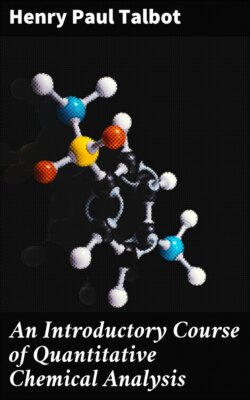Читать книгу An Introductory Course of Quantitative Chemical Analysis - Henry Paul Talbot - Страница 29
CALIBRATION OF PIPETTES
ОглавлениеPROCEDURE.—Clean the pipette. Draw distilled water into it by sucking at the upper end until the water is well above the graduation mark. Quickly place the forefinger over the top of the tube, thus preventing the entrance of air and holding the water in the pipette. Cautiously admit a little air by releasing the pressure of the finger, and allow the level of the water to fall until the lowest point of the meniscus is level with the graduation. Hold the water at that point by pressure of the finger and then allow the water to run out from the pipette into a small tared, or weighed, beaker or flask. After a definite time interval, usually two to three minutes, touch the end of the pipette against the side of the beaker or flask to remove any liquid adhering to it (Note 1). The increase in weight of the flask in grams represents the volume of the water in cubic centimeters delivered by the pipette. Calculate the necessary correction.
[Note 1: A definite interval must be allowed for draining, and a definite practice adopted with respect to the removal of the liquid which collects at the end of the tube, if the pipette is designed to deliver a specific volume when emptied. This liquid may be removed at the end of a definite interval either by touching the side of the vessel or by gently blowing out the last drops. Either practice, when adopted, must be uniformly adhered to.]
